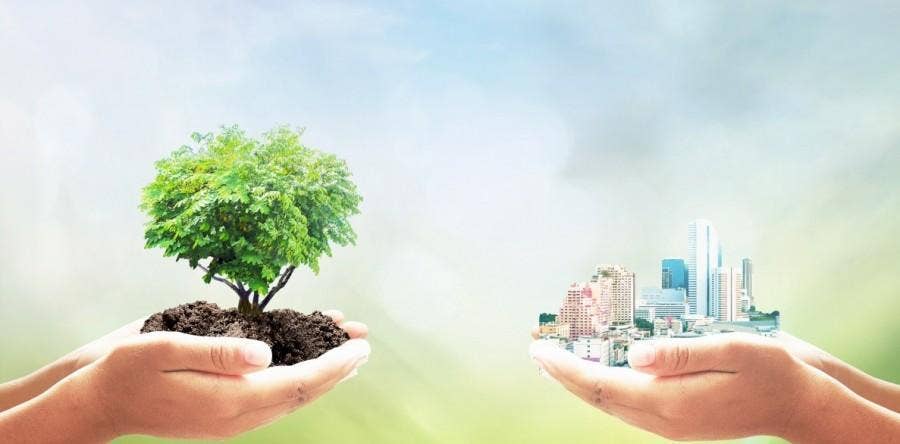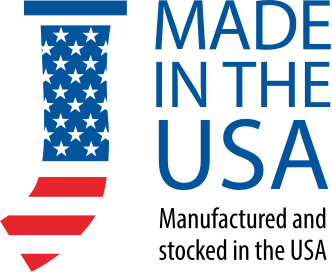Sustainable goals include improving the way people live and build while creating a lower impact on the environment and the ability for future generations to meet their own needs in times to come. Sound too good to be true? If you are in the construction industry, you know it’s a very real thing called
sustainable building. More than just a trend, the
sustainable building offers environmental, economic, and social benefits making it something that will become an integral part of the industry as a whole. These factors help in governing the building design, quality of architecture, technologies and processes, working conditions, and serve as the basis for sustainable construction. The construction itself focuses on seven core principles throughout the building life-cycle which are protecting nature, reducing the consumption of resources, reusing resources, using recyclable resources, eliminating toxins, applying life-cycle costing, and an emphasis on quality. Some key best practices in green building have quickly taken over, as well as green materials that will help further define sustainable construction in the future.
The Future Is Green
Construction materials made from scratch not only require a lot of energy but can create waste in the process. In order to reduce this footprint, using low-impact green building materials that are sourced from renewable sources with the ability to be recycled when the building has reached its lifespan is so important. Often green building materials are either produced via an innovative process that lower harmful emissions into the atmosphere or sourced from sustainable forests.
Here are five sustainable building materials to know:
1. Photoluminescent Exit Signs

Photoluminescent technology is currently one of the only non-electric, non-radioactive options on the market for approved
emergency exit signs, making it a
top choice for sustainable construction and buildings emergency exit signage. Options like Jessup’s UL924 listed PF100 photoluminescent exit sign and PM100 photoluminescent exit sign are not only easy to install and maintenance free, but they are recyclable and last up to 25 years without using any electricity. During a blackout or fire, the stored energy in the photoluminescent sign will make it immediately start to glow to allow people to be safely guided to the nearest exit. As with all of Jessup Manufacturing
GloBrite® exit signs, the PM100 and PF100 are tested to glow a minimum of 90 minutes in a power outage or when the lights go out when fully charged.
Photoluminescent emergency exit signs use phosphor as their main ingredient, which has properties to absorb, store, and then emit light at a later time when previously exposed to light. Photoluminescent exit signs act like a sponge by absorbing and holding light energy, and then will slowly release it when needed over an extended period of time. This allows photoluminescent exit signs to be an excellent green building material product that is hassle-free and safe.
Other facts to know about photoluminescent exit signs:
- Builders can earn points towards LEED certification (Leadership in Energy and Environmental Design) — the most widely used green building rating system in the world, by choosing photoluminescent exit signs and exit path markings.
- Numerous U.S. building codes already require photoluminescent exit markings and signage.
- According to Energy Star, if your building replaced 100 LED exit signs with eco-friendly photoluminescent exit signs, you would be looking at an energy cost savings of over $450 a year.
- When choosing a photoluminescent exit sign make sure it is UL 924 Emergency Lighting and Power Equipment listed by UL, meets NFPA Life Safety Code 101, OSHA requirements and International Building and Fire Code 2009, 2012, 2015, 2018
2. Bamboo
Bamboo has got to be one of the most well-known green building material products on the market and for good reason. With the species able to regenerate at an exponential rate (in some cases 3 feet in 24 hours) and the fact that it can take a beating without needing to be replaced very often, it makes for a viable flooring or cabinet choice in buildings and can also contribute towards the allocation of LEED points for builders.
Bamboo also takes less energy to transport than other comparable durable materials on the market due to its lightweight nature. However, it has been known to swell and even crack if it absorbs water and should never be installed without treatment to resist insects and rot. The fact that bamboo offers greater compressive strength than brick or concrete, looks beautiful, and is a rapidly renewable material makes it an excellent choice for a sustainable building material.
3. Cork
Similar to bamboo, cork is another quickly growing resource that builders can take advantage of when it comes to various parts of their construction process. Being extremely flexible and resilient, it makes for great floor tiles. Cork’s natural ability to absorb noise and shock make it an excellent green choice for insulation and sub-flooring. Another interesting fact about cork is when left uncoated, it is naturally fire resistant and does not release any toxic gases if burned.
Because cork is primarily found in the Mediterranean does mean that shipping fees can become considerable. Luckily, cork is lightweight— meaning it takes less energy to ship it, and often this can offset the shipping fees. Cork does not rot or absorb water like bamboo but will become brittle over time.
4. Recycled metal
What’s old is new again. By taking metals like steel and aluminum and properly and efficiently reusing or recycling them into new products, it lowers their embodied energy, thus making them more sustainable. A metal like steel is endlessly recyclable (in fact it is North America’s #1 recycled material), nontoxic to humans or the environment, and uses relatively low energy to produce initially. Thanks to advances in manufacturing technology, the energy to produce raw steel has
dropped 60% since 1960. Metals like this offer a strong, long-lasting, water, and pest resistant product in your building process. This makes metal an excellent choice for structural supports, building facades, and roofing.
Additionally, check out the ways manufacturers are making steel even more sustainable:
- Reusing the by-product gases from the furnaces as they are a direct fuel substitute.
- Recapturing and cleaning CO2 by-products to make carbonated drinks.
- Using electric arc furnaces for steel production which utilize 100% scrap metal. This means less energy than producing new steel.
5. Precast concrete slabs
Concrete is a natural choice for sustainable home construction. Limestone, the most abundant mineral on earth, is the predominant raw material found in concrete. Precast concrete slabs are generally produced via eco-friendly manufacturing processes offsite and then shipped in whole sections to the construction site. The outer layers usually envelop a lightweight filler, like foam insulation, or can be made entirely of concrete but have large, hollow air spaces, like concrete blocks. Even though it is heavy, it requires very little processing and can be produced in the specific quantities needed for each project, making its embodied energy noteworthy. Precast concrete slabs’ sustainability factor is even higher than many traditional poured concrete options because the slabs often take much less energy to produce and assemble. Because they are in a controlled environment, precast concrete also has the ability to cure in a controlled environment. Concrete poured on site is prone to improper curing which can lead to cracks and structural faults within the concrete and in some cases the need to demolish the concrete and start the entire process over again.
Precast concrete slabs hold up to all kinds of weather, so they are commonly used for walls, building facades, and even floors and flat roofs. Concrete is also extremely energy efficient, so homes and buildings built with them enjoy a significant cut to their heating and cooling bills, plus require small-capacity HVAC equipment. As a highly affordable building material, the ability to be recycled, and energy efficiencies precast concrete slabs are worth considering for your next building project.
Thanks to the increasing demand for green developments, eco-friendly building materials are becoming the standard. From photoluminescent exit signs to reclaimed metal, using sustainable building materials allow you to build structures with a lower carbon footprint and improved energy efficiency, all while saving costs, increasing quality and improving efficiencies in the construction process. Actively work with your city and state to implement sustainable practices in building and as an organization seek LEED certification. Also, understand who you are working with when you buy your products. If the producer and fabricator don’t follow strict procedures regarding reuse, waste disposal, and other key operations, the above materials are moot- so vet your vendor and their sources carefully. The shift to sustainability won’t happen overnight, but through proper research, innovation, and participation from stakeholders, it will move forward to help future generations.
 Photoluminescent technology is currently one of the only non-electric, non-radioactive options on the market for approved emergency exit signs, making it a top choice for sustainable construction and buildings emergency exit signage. Options like Jessup’s UL924 listed PF100 photoluminescent exit sign and PM100 photoluminescent exit sign are not only easy to install and maintenance free, but they are recyclable and last up to 25 years without using any electricity. During a blackout or fire, the stored energy in the photoluminescent sign will make it immediately start to glow to allow people to be safely guided to the nearest exit. As with all of Jessup Manufacturing GloBrite® exit signs, the PM100 and PF100 are tested to glow a minimum of 90 minutes in a power outage or when the lights go out when fully charged.
Photoluminescent emergency exit signs use phosphor as their main ingredient, which has properties to absorb, store, and then emit light at a later time when previously exposed to light. Photoluminescent exit signs act like a sponge by absorbing and holding light energy, and then will slowly release it when needed over an extended period of time. This allows photoluminescent exit signs to be an excellent green building material product that is hassle-free and safe.
Photoluminescent technology is currently one of the only non-electric, non-radioactive options on the market for approved emergency exit signs, making it a top choice for sustainable construction and buildings emergency exit signage. Options like Jessup’s UL924 listed PF100 photoluminescent exit sign and PM100 photoluminescent exit sign are not only easy to install and maintenance free, but they are recyclable and last up to 25 years without using any electricity. During a blackout or fire, the stored energy in the photoluminescent sign will make it immediately start to glow to allow people to be safely guided to the nearest exit. As with all of Jessup Manufacturing GloBrite® exit signs, the PM100 and PF100 are tested to glow a minimum of 90 minutes in a power outage or when the lights go out when fully charged.
Photoluminescent emergency exit signs use phosphor as their main ingredient, which has properties to absorb, store, and then emit light at a later time when previously exposed to light. Photoluminescent exit signs act like a sponge by absorbing and holding light energy, and then will slowly release it when needed over an extended period of time. This allows photoluminescent exit signs to be an excellent green building material product that is hassle-free and safe.



















